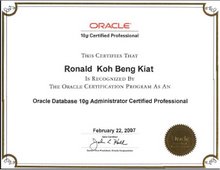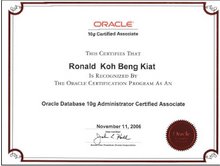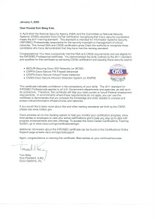With the recent identify theft cases that are happening around the banking industry, a new regulation is going to be implemented for counter fight identity theft. Effective November 1, 2008, all federally regulated banks, credit card companies and other financial institutions will be required to be in full compliance with the Identity Theft Red Flags Rule, which is designed to financial services firms protect consumers' identities.. The goal of the rules is to "flag" attempted and actual identity theft early, thereby reducing consequences associated with identity theft.
Each institution's program must include policies and procedures for detecting, preventing and mitigating identity theft. Further, the program must set forth a list of red flag activities that signal possible identity theft and a response plan for when a flag is raised. In addition, each financial institution must update its program periodically to reflect changes in risks from identity theft and implement a risk management program as part of the ID Theft Red Flags regulation.
8 tips for a Better Risk Management:
1. Assess in detail the different products and service offering of a financial institution, and review which red flags and level of risk is applicable for that particular product or service offer for example, - "credit cards" need high level of monitoring as well as pose high risk as fraudulent activities are most likely.
2. Streamline automation and manual checks for red flag items where necessary.
3. Focus on the different channels through which these products and services are provided to end users. For example, online access over the internet is more risky when compared to physically going to the bank.
4. Spend different amount of attention on each product and service offering based on risk factor. High risk demands more attention.
5. Study the historical data of an institution for identifying fraud activities, patterns etc.
6. Integrate risk management to current security and privacy programs by adopting similar approach for conducting risk assessments for different departments within the enterprise and leveraging data from these individual risk assessments to another. This will help identify clearly which regulation has directly focused on the risk or red flag action item, without duplicating effort, then attacking and placing checks on the ones that are relevant.
7. Do not depend totally on the vendor or service bureau for putting checks and conducting their own risk assessment. Instead have a thorough risk assessment program initiated and implemented by the financial institution for its different service bureaus to ensure full proof check and updates.
8. Appoint a key person to take charge and ownership of the risk management process. This person will initiate annual risk program effectiveness, adopt a revision process, monitor and constantly analyze current industry situations and risk profile, appoint a committee for ensuring that appropriate program is deployed, making and proposing changes etc.
Upasana
The Hacka Man
Monday, August 18, 2008
How to hack a Bank part 1?
This is going to be a very sensitive topic for the Banking industry, however I am not going to post any exploits or vulnerabilities of how to hack a bank, instead a high level overview of how to gain money from a bank. I am not going to write a long article on this as the story might go on and on.
Several months back, i was performing a penetration test for a large bank here. Although it was only a web penetration test, i was already starting to observe the banking environment, the technology used, the physical environment, their partners, ATM etc, to see if loopholes can discovered. Everyday at the bank, i made new friends and started talking to them to learn more about the banking environment and the job nature. At the end of the penetration test, I was thinking to publish an article of how to hack a bank, however, its either i am too lazy to do so or i can't be bothered. Today, I just feel like writing an article on it, just a sudden urge to do so.
In early days, the banking environment used to be a simple and closed environment whereby the only way to hack the bank is to rob the bank. There were no ATMs, no internet banking, no huge and complicated networks. To withdraw any money, the only way is to go to the bank's branch and fill up the withdraw form and provide your bank account passbook for updating purposes and the money is given to you. Mainframe is the backend system that does all the processing of the transactions, i think until this very day, it still prevails. Today, we are more advanced. We have internet banking without the need of any passbooks, we have ATMs, Credit and Debit cards, complex networks to interconnect multiple systems together, we have cash deposit machines, huge variations of databases and partners that might house the bank's data/information. So you see, it used to be maybe one or two doors opened. Today however, many possibilities are possible because of multiple doors being opened. We still have not factored in the physical site and environment. You might be surprise that this is one of the most easiest way to enter the bank.
A lot of people might think that hacking the bank is a tough job due to its tight security and controls, but you might be surprise that sometimes the weakest link is actually the easiest link. Stay tuned for part 2.
Disclaimer: The materials and information here are solely for educational purpose only. Do not attempt to hack a bank with knowledge acquired. Do not try at any bank.
The Hacka Man
Several months back, i was performing a penetration test for a large bank here. Although it was only a web penetration test, i was already starting to observe the banking environment, the technology used, the physical environment, their partners, ATM etc, to see if loopholes can discovered. Everyday at the bank, i made new friends and started talking to them to learn more about the banking environment and the job nature. At the end of the penetration test, I was thinking to publish an article of how to hack a bank, however, its either i am too lazy to do so or i can't be bothered. Today, I just feel like writing an article on it, just a sudden urge to do so.
In early days, the banking environment used to be a simple and closed environment whereby the only way to hack the bank is to rob the bank. There were no ATMs, no internet banking, no huge and complicated networks. To withdraw any money, the only way is to go to the bank's branch and fill up the withdraw form and provide your bank account passbook for updating purposes and the money is given to you. Mainframe is the backend system that does all the processing of the transactions, i think until this very day, it still prevails. Today, we are more advanced. We have internet banking without the need of any passbooks, we have ATMs, Credit and Debit cards, complex networks to interconnect multiple systems together, we have cash deposit machines, huge variations of databases and partners that might house the bank's data/information. So you see, it used to be maybe one or two doors opened. Today however, many possibilities are possible because of multiple doors being opened. We still have not factored in the physical site and environment. You might be surprise that this is one of the most easiest way to enter the bank.
A lot of people might think that hacking the bank is a tough job due to its tight security and controls, but you might be surprise that sometimes the weakest link is actually the easiest link. Stay tuned for part 2.
Disclaimer: The materials and information here are solely for educational purpose only. Do not attempt to hack a bank with knowledge acquired. Do not try at any bank.
The Hacka Man
Monday, May 12, 2008
Yet Another SQL injection
I was boring the other day, so here i am again toying and playing with SQL injection. Wow, for this particular site, not only they did not turn off debugging, they also allow me to view other very juicy information. I must say if i am determined to hack the site, i can successful grab lotsa juicy information. Not only that, because it is a online shopping site, i can change information and buy things at a much much cheaper price. Check out the information leakage!!



The Hacka Man



The Hacka Man
Thursday, April 3, 2008
Scanless PCI, Hurray
Sometime ago, i mentioned something about PCI and its credibility. In short i was saying that are all those PCI certified companies safe from attacks just because they are PCI certified? Today we witnessed something better, more cost effective, faster, least intrusive and for the best part? It does not even cost a single cent as compared to hackersafe or qualys, unless you subscribe for additinal service. Well, i had not personally register for the service, but i guess it will be much more proficient with the current pci standards. The setup up is simple, just copy and paste the codes to your side and that will do it. Check out
http://www.scanlesspci.com/

The Hacka Man
http://www.scanlesspci.com/

The Hacka Man
Wednesday, January 30, 2008
PIX/ASA Finesse 7.1 & 7.2 Privilege Escalation
I was trying to get into admin mode without the enable password during a penetration test and i came across a post by Terry where he describes a designing flaw in the PIX/ASA Finesse Operation System, version 7.1 and 7.2. Well, it was possible to escalate a normal level 0 user to a level 15 privilege user. The exploit is simple and it only works locally, at the console and remotely with Telnet. However, do note that it will NOT work if SSH, TACACS or Radius is implemented in the firewall. Below are the steps.
1. Login with your user level 0 account. Once logon, you will be prompted to enter the enable password which is the privilege password.
2. At this prompt if you move your cursor forward with a space or character(it doesn't matter if there are more then one), and then proceed to delete any spaces or characters, by holding down the backspace a second after deleting the last character it should immediately drop you into level 15 privilege-exec mode.
It had been tested on PIX 515E, Finesse version 7.2 and i had also tested it on the PIX 525.
The Hacka Man
1. Login with your user level 0 account. Once logon, you will be prompted to enter the enable password which is the privilege password.
2. At this prompt if you move your cursor forward with a space or character(it doesn't matter if there are more then one), and then proceed to delete any spaces or characters, by holding down the backspace a second after deleting the last character it should immediately drop you into level 15 privilege-exec mode.
It had been tested on PIX 515E, Finesse version 7.2 and i had also tested it on the PIX 525.
The Hacka Man
Wednesday, January 16, 2008
Web Attacker Toolkit
Sorry for the lack of updates. Been roaming around for the past 2 months and felt a little lazy in updating my blog. i was reading news on the internet today and i read something about a hacking toolkit that was able to compromise thousands of webservers and that caught my attention. Well, apparently the tool called the "Web Attacker Toolkit" can be bought from the Russian hacking group called Inex-Lux for a cheap price. All unpatched IE and Firefox browsers can be compromised, with a trojan silently being installed into the local PC without user knowing it. Once a trojan is installed, the game is over. After reading the news, of course i have upgraded my IE and my Firefox to the latest version to avoid any exploitation. Check out those three links below:
http://www.informationweek.com/news/showArticle.jhtml?articleID=186700539
http://www.websense.com/securitylabs/alerts/alert.php?AlertID=472
http://informationweek.com/news/showArticle.jhtml?articleID=205603044
The Hacka Man
http://www.informationweek.com/news/showArticle.jhtml?articleID=186700539
http://www.websense.com/securitylabs/alerts/alert.php?AlertID=472
http://informationweek.com/news/showArticle.jhtml?articleID=205603044
The Hacka Man
Subscribe to:
Posts (Atom)









